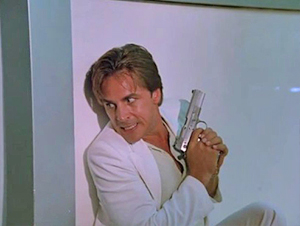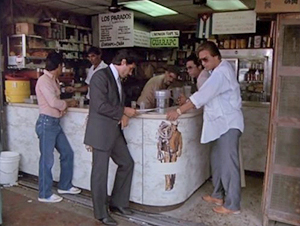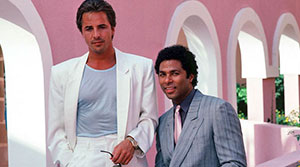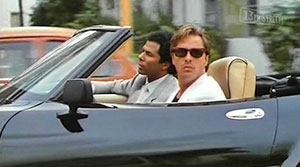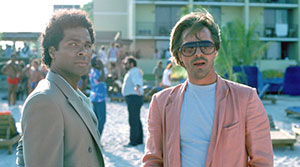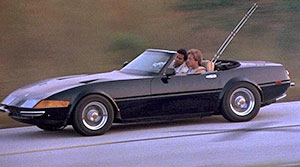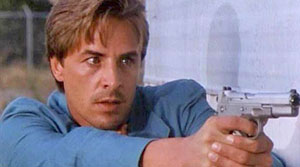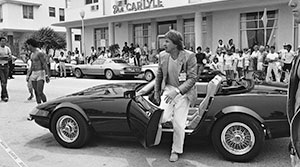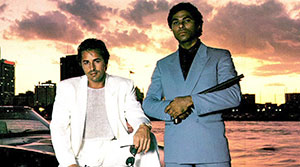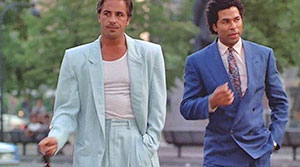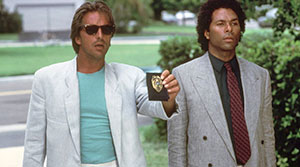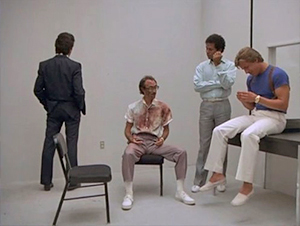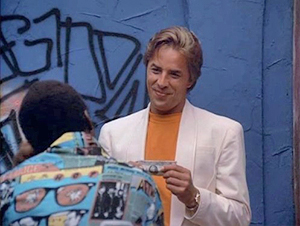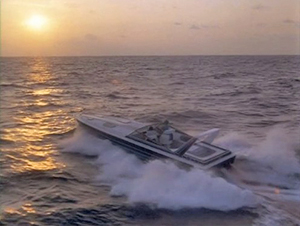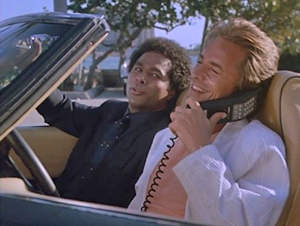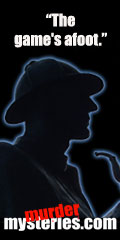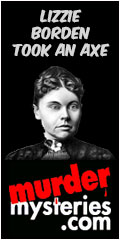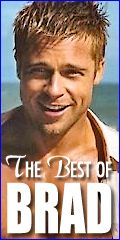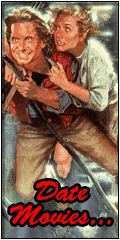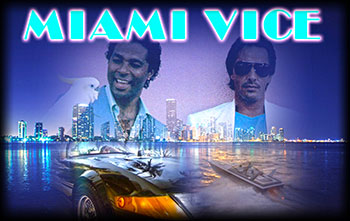
Miami Vice
Miami Vice was a crime drama series created by Anthony Yerkovich and produced by Michael Mann for NBC. It starred Don Johnson as James "Sonny" Crockett and Philip Michael Thomas as Ricardo "Rico" Tubbs, two Miami-Dade Police Department detectives working undercover in Miami. The series ran for five seasons, from 1984 to 1989.
Standing apart from regular police procedurals, Miami Vice drew heavily on 1980s New Wave culture and music, was noted for its synthesis of music and visual effects, and is widely considered to be one of the most influential TV shows ever.
Most episodes focused on combating drug trafficking and prostitution, with stories that often ended with intense shootouts and violence. A sense of cynicism and futility runs through the entire series. Crockett and Tubbs often remark on the "Whac-A-Mole" nature of drug interdiction, with one drug cartel quickly and inevitably being replaced by another.
Nick Nolte, Jeff Bridges, Mickey Rourke and even Larry Wilcox were considered for the show before producers chose Don Johnson and Philip Michael Thomas.
Jan Hammer credited Michael Mann with giving him great creative freedom in scoring and composing for the show. The result was several memorable instrumental pieces, including the show's title theme, and two hits from Glenn Frey: "Smuggler's Blues" and "You Belong to the City". The series soundtrack reached the top of the U.S. album charts and stayed there for 11 weeks in 1985, making it the most successful TV soundtrack at the time. The theme song won two Grammy Awards and was voted the No. 1 theme song of all time by TV Guide readers.
The show popularized mens fashion, including Don Johnson's preferred attire of Italian sport coat, T-shirt, white linen pants, and slip-on sockless loafers. His perpetually unshaven appearance inspired many men to wear a small amount of beard stubble, also known as a five o'clock shadow (or "designer stubble") at all times. Designers such as Vittorio Ricci, Gianni Versace, and Hugo Boss were consulted in keeping the show's male leads appearing trendy. Miami Vice's costume designer, Bambi Breakstone, traveled regularly to Milan, Paris, and London in search of new clothes, saying, "The concept of the show is to be on top of all the latest fashion trends in Europe." Jodi Tillen, the show's costume designer in its first season, along with Michael Mann, defined its style. The pervasive use of pastel colors on the show mirrored Miami's Art-deco architecture.
Miami Vice popularized certain brands of guns and accessories. When Johnson grew dissatisfied with his gun holster, the Jackass Leather Company (later rechristened Galco International) president, Rick Gallagher, personally fitted Don Johnson with an "Original Jackass Rig", which later became known as the "Miami Classic".
The Bren Ten, made by Dornaus & Dixon, was a stainless-steel handgun used by Don Johnson during Miami Vice's first two seasons. Dornaus & Dixon went out of business in 1986, and Smith & Wesson stepped into the breach to outfit Detective Crockett with an S&W Model 645.
Several firearms never seen on TV before were shown prominently in the show, including the Glock 17 pistol, as well as firearms not well known to the public, including the Steyr AUG and the Desert Eagle.
Miami Vice scripts were loosely based on actual crimes that occurred in Miami over the years. The series also examined political issues such as the Northern Ireland conflict, the South American drug war, the Miami River Cops scandal (an actual police corruption ring involving narcotic thefts, drug dealing and murders), Cuban exile guerrillas, drug trafficking (for which real-life Miami was a main hub and entrance point into North America at the time), and U.S. support of anti-communist generals and dictators in Southeast Asia and South America. Social issues such as child abuse, homophobia, and the AIDS crisis were also covered.
Personal issues were also explored, including Crockett's separation from his wife Caroline (Belinda Montgomery) in the pilot and eventual divorce by the fourth episode. Later, his second wife Caitlin Davies (Sheena Easton) is killed by one of his enemies. In three episodes — "Mirror Image", "Hostile Takeover", and "Redemption in Blood" — a concussion from an explosion leaves Crockett believing that he is his undercover alter ego Sonny Burnett, a drug dealer. Tubbs had an ongoing, half-personal/half-professional vendetta with the Calderone family, a member of which had previously ordered the death of his brother Rafael, a New York City detective.
In the first seasons the tone of the show was often markedly light, especially when characters like the police informants Noogie Lamont (Charlie Barnett) and Izzy Moreno (Martin Ferrero) showed up. Later the stories grew dark and cynical, often venturing into existential territory, with Crockett and Tubbs fighting corruption, and storylines underlining the human tragedy behind many crimes. These darker episodes typically had no denouement, with episodes ending abruptly after climaxes that featured violence and death. The stories have a despairing and nihilistic feel underneath the glamor and showy display of wealth. Many critics cite Miami Vice as a modern paragon of made-for-TV neo-noir, and Michael Mann as one of the most influential directors operating in that genre.
Before leaving Miami Vice for his new show, Crime Story, Michael Mann turned over the executive producer reins to future Law & Order creator Dick Wolf prior to the third season (1986–1987). Wolf turned the show's focus to contemporary issues like the Troubles in Northern Ireland and capital punishment.
In May 1989, NBC aired the two-hour series finale, "Freefall", but there were also three episodes that didn't air in Miami Vice's original run — "World of Trouble", "Miracle Man", and "Leap of Faith". They would later be broadcast as "Lost Episodes". A fourth such episode, "Too Much Too Late", aired for the first time in 1990.

